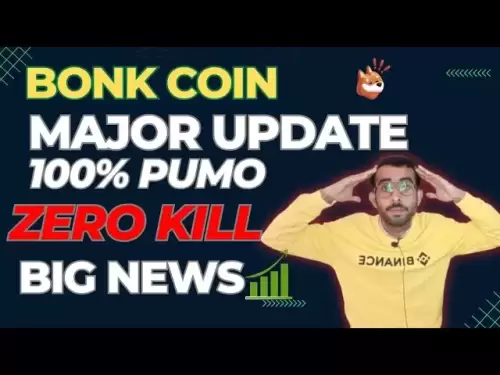-
 Bitcoin
Bitcoin $109,507.9823
0.43% -
 Ethereum
Ethereum $2,716.0274
3.79% -
 Tether USDt
Tether USDt $1.0003
-0.01% -
 XRP
XRP $2.3859
3.05% -
 BNB
BNB $665.2705
0.56% -
 Solana
Solana $154.6874
1.56% -
 USDC
USDC $1.0002
0.02% -
 TRON
TRON $0.2896
1.05% -
 Dogecoin
Dogecoin $0.1738
1.67% -
 Cardano
Cardano $0.6117
3.72% -
 Hyperliquid
Hyperliquid $40.3052
3.82% -
 Sui
Sui $2.9817
2.08% -
 Bitcoin Cash
Bitcoin Cash $505.0944
0.71% -
 Chainlink
Chainlink $14.0820
1.96% -
 Stellar
Stellar $0.2902
12.90% -
 UNUS SED LEO
UNUS SED LEO $9.0423
-0.34% -
 Avalanche
Avalanche $18.7084
1.54% -
 Hedera
Hedera $0.1714
6.33% -
 Shiba Inu
Shiba Inu $0.0...01218
2.48% -
 Toncoin
Toncoin $2.8261
1.24% -
 Litecoin
Litecoin $88.8228
1.59% -
 Monero
Monero $319.1344
2.71% -
 Polkadot
Polkadot $3.5479
2.69% -
 Dai
Dai $1.0001
0.00% -
 Ethena USDe
Ethena USDe $1.0010
0.06% -
 Uniswap
Uniswap $8.2690
6.49% -
 Bitget Token
Bitget Token $4.3622
1.19% -
 Aave
Aave $298.5989
2.11% -
 Pepe
Pepe $0.0...01042
1.97% -
 Pi
Pi $0.4663
1.15%
What is WASM and its application in blockchain?
WASM enhances blockchain smart contract execution with near-native speed, offering performance and flexibility, as seen in EOS and Polkadot.
Apr 10, 2025 at 05:08 pm
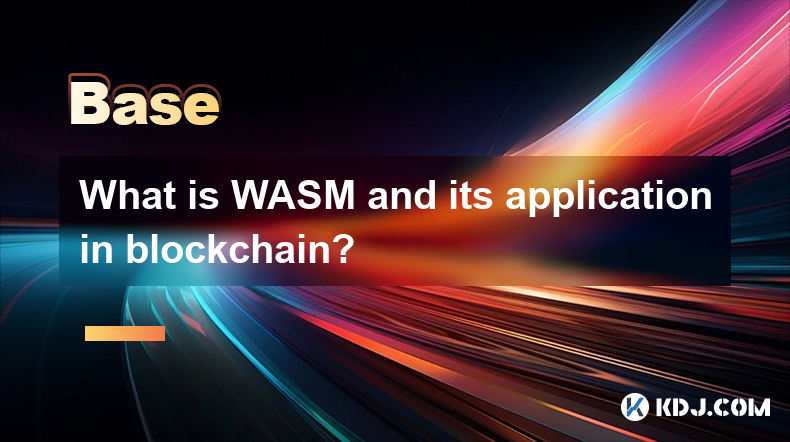
WebAssembly (WASM) is a binary instruction format for a stack-based virtual machine. It is designed to be a portable compilation target for programming languages, enabling deployment on the web for client and server applications. In the context of blockchain, WASM has emerged as a significant technology, particularly for enhancing the performance and flexibility of smart contract execution.
What is WASM?
WASM, short for WebAssembly, is a low-level, assembly-like language with a compact binary format. It is designed to run at near-native speed by taking advantage of common hardware capabilities. WASM is not intended to be written by hand but rather to be an effective compilation target for source languages like C, C++, and Rust. This allows developers to write high-performance applications that can run in web browsers and other environments.
How Does WASM Work?
WASM operates by compiling high-level code into a binary format that can be executed by a WASM runtime environment. This runtime environment can be integrated into web browsers, allowing WASM modules to run alongside JavaScript. The key advantage of WASM is its ability to execute at near-native speed, which is significantly faster than traditional JavaScript execution. This makes it an attractive option for applications requiring high performance, such as games and complex computations.
WASM in Blockchain
In the blockchain ecosystem, WASM has found a significant application in the execution of smart contracts. Smart contracts are self-executing contracts with the terms of the agreement directly written into code. WASM's ability to run at near-native speed makes it an ideal choice for executing these contracts efficiently. Several blockchain platforms, including EOS and Polkadot, have adopted WASM for their smart contract execution engines.
Benefits of Using WASM in Blockchain
The integration of WASM into blockchain technology offers several benefits. Firstly, it enhances the performance of smart contract execution. By compiling smart contracts into WASM, blockchains can process transactions and execute logic much faster than with traditional scripting languages. Secondly, WASM provides greater flexibility in smart contract development. Developers can write smart contracts in languages like Rust or C++, which are more familiar and powerful than the domain-specific languages typically used in blockchain environments.
Case Studies: EOS and Polkadot
EOS is one of the first major blockchain platforms to adopt WASM for smart contract execution. EOS uses a WASM-based virtual machine called WebAssembly Virtual Machine (WAVM) to run its smart contracts. This allows developers to write smart contracts in C++ and compile them into WASM, which can then be executed on the EOS network. The use of WASM has significantly improved the performance and scalability of the EOS platform.
Polkadot, another prominent blockchain platform, also leverages WASM for its smart contract execution. Polkadot's smart contract platform, known as Substrate, allows developers to write smart contracts in Rust and compile them into WASM. This approach enables Polkadot to offer a highly flexible and efficient environment for smart contract development and execution.
Challenges and Considerations
While WASM offers numerous benefits for blockchain applications, there are also challenges and considerations to keep in mind. One challenge is the complexity of integrating WASM into existing blockchain systems. This requires significant development and testing to ensure that the WASM runtime environment is secure and efficient. Another consideration is the learning curve for developers. While WASM allows for the use of familiar programming languages, developers still need to understand the nuances of compiling and deploying WASM modules on blockchain platforms.
How to Implement WASM in a Blockchain Project
Implementing WASM in a blockchain project involves several steps. Here is a detailed guide on how to do this:
Choose a Programming Language: Select a language that can be compiled into WASM, such as Rust or C++. For this example, we will use Rust.
Set Up the Development Environment: Install the necessary tools, including the Rust compiler (rustc) and the WebAssembly target. You can do this by running the following commands:
rustup target add wasm32-unknown-unknownWrite the Smart Contract: Develop your smart contract using Rust. Here is a simple example of a smart contract that increments a counter:
#[no_mangle]
pub fn increment() -> u32 {let mut counter = 0; counter += 1; counter}
Compile the Smart Contract to WASM: Use the Rust compiler to compile your smart contract into WASM. Run the following command:
cargo build --target wasm32-unknown-unknown --releaseDeploy the WASM Module: Depending on the blockchain platform you are using, you will need to follow specific steps to deploy your WASM module. For example, on EOS, you would use the
cleoscommand-line tool to deploy the contract:cleos set contractTest and Verify: After deployment, test your smart contract to ensure it functions as expected. Use the blockchain platform's testing tools to verify the correctness and performance of your WASM module.
Security Considerations
When using WASM in blockchain applications, security is a critical concern. WASM modules must be thoroughly tested and audited to prevent vulnerabilities. Since WASM can execute at near-native speed, any security flaws can be exploited more easily than in slower, interpreted environments. It is essential to use secure coding practices and to keep the WASM runtime environment up to date with the latest security patches.
Performance Optimization
To maximize the benefits of WASM in blockchain, developers should focus on performance optimization. This includes minimizing the size of the WASM module to reduce the overhead of loading and executing it. Additionally, developers can use profiling tools to identify and optimize performance bottlenecks in their smart contracts. By carefully optimizing the WASM code, developers can achieve significant improvements in transaction throughput and execution speed.
Community and Ecosystem
The WASM community and ecosystem are growing rapidly, with many tools and libraries available to support developers. Projects like wasm-bindgen and wasm-pack provide essential tools for working with WASM in web and blockchain environments. Additionally, there are numerous online resources and forums where developers can share knowledge and best practices for using WASM in blockchain applications.
Frequently Asked Questions
Q: Can WASM be used with other blockchain platforms besides EOS and Polkadot?
A: Yes, WASM can be integrated into various blockchain platforms. While EOS and Polkadot are prominent examples, other platforms like Near Protocol and DFINITY also support WASM for smart contract execution. The specific implementation details may vary, but the core concept of using WASM to enhance performance and flexibility remains the same.
Q: Is it possible to use languages other than Rust and C++ for WASM in blockchain?
A: While Rust and C++ are the most commonly used languages for compiling to WASM in blockchain applications, other languages like AssemblyScript and Go can also be used. However, the support and tooling for these languages may not be as mature as for Rust and C++, so developers should carefully evaluate their options based on their project requirements.
Q: How does the use of WASM affect the security of a blockchain network?
A: The use of WASM can enhance the security of a blockchain network by allowing for more efficient and robust smart contract execution. However, it also introduces new security considerations, such as the need for thorough testing and auditing of WASM modules. Developers must balance the performance benefits of WASM with the need to maintain a secure and reliable blockchain environment.
Q: Are there any specific tools or frameworks recommended for developing WASM-based smart contracts?
A: Several tools and frameworks are recommended for developing WASM-based smart contracts. For Rust developers, the ink! framework is popular for writing smart contracts on the Polkadot ecosystem. For C++ developers working with EOS, the eosio.cdt (Contract Development Toolkit) is essential. Additionally, tools like wasm-bindgen and wasm-pack are useful for general WASM development and can be adapted for blockchain applications.
Disclaimer:info@kdj.com
The information provided is not trading advice. kdj.com does not assume any responsibility for any investments made based on the information provided in this article. Cryptocurrencies are highly volatile and it is highly recommended that you invest with caution after thorough research!
If you believe that the content used on this website infringes your copyright, please contact us immediately (info@kdj.com) and we will delete it promptly.
- NEXBRIDGE, NEXPLACE, and the Bitcoin Ecosystem: Building a New Financial Frontier
- 2025-07-09 23:10:13
- MEXC Launchpad & PUMP Token: Grab a 40% Discount?
- 2025-07-09 22:50:12
- Trade System Revolution: How XDC and the End of Faxes Are Reshaping Finance
- 2025-07-09 23:10:13
- Ripple, CLARITY Act, and the XRP Case: A New York Minute on Crypto Regulation
- 2025-07-09 23:50:12
- No Rs 50 Coin? Delhi HC Hears Why India Prefers Banknotes
- 2025-07-09 23:15:11
- No Rs 50 Coin? Delhi HC Hears Why Banknotes Reign Supreme
- 2025-07-09 23:50:12
Related knowledge
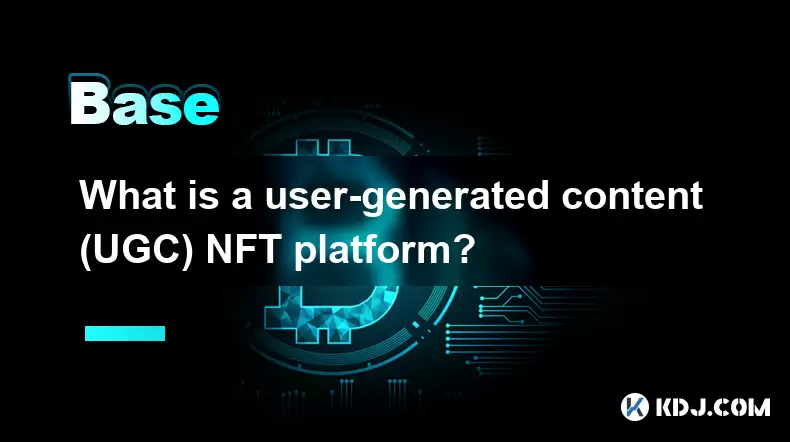
What is a user-generated content (UGC) NFT platform?
Jul 04,2025 at 01:49pm
<h3>Understanding the Concept of a UGC NFT Platform</h3><p>A user-generated content (UGC) NFT platform is a digital marketplace or e...
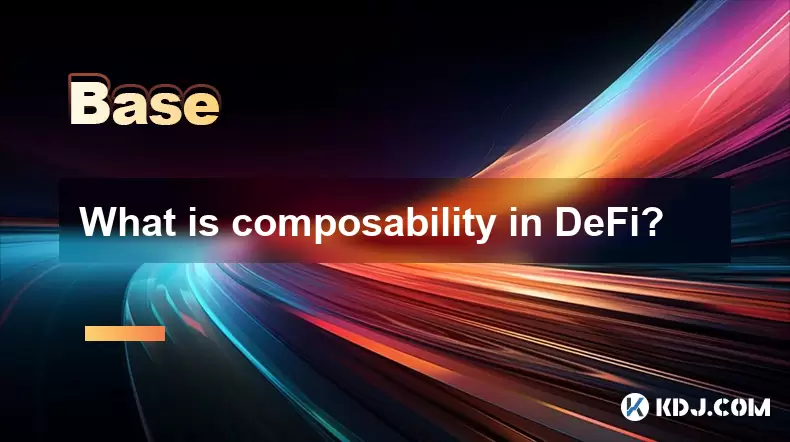
What is composability in DeFi?
Jul 06,2025 at 04:07pm
<h3>Understanding the Concept of Composability in DeFi</h3><p>Composability in DeFi refers to the ability of decentralized finance p...
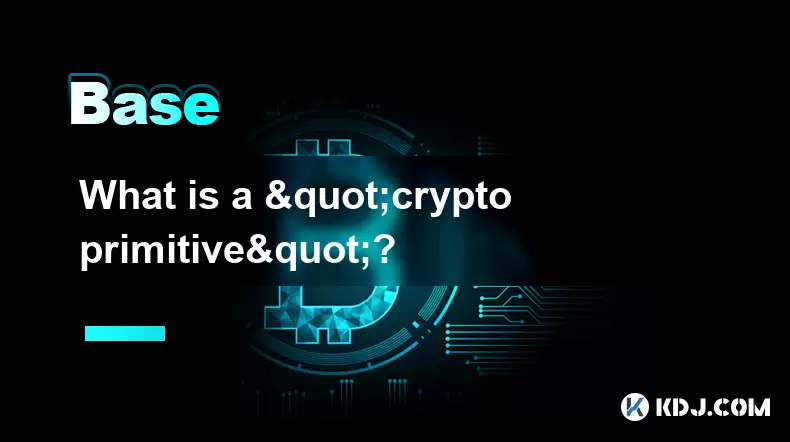
What is a "crypto primitive"?
Jul 05,2025 at 10:14pm
<h3>Defining the Concept of a Crypto Primitive</h3><p>In the context of blockchain and cryptocurrency, a crypto primitive refers to ...
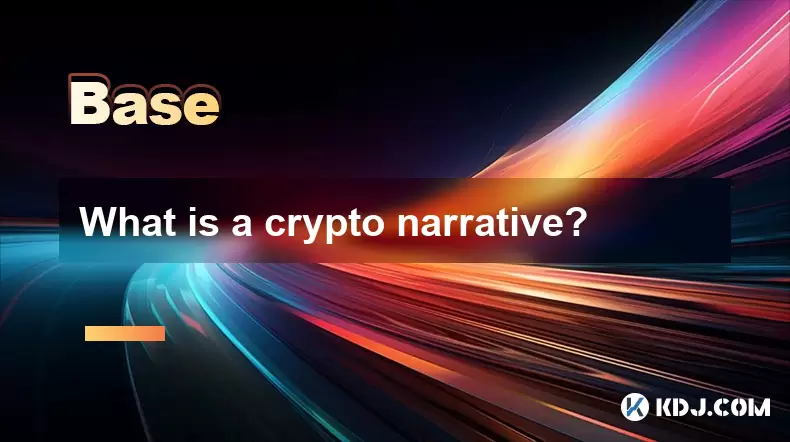
What is a crypto narrative?
Jul 07,2025 at 10:56pm
<h3>Defining the Concept of a Crypto Narrative</h3><p>A crypto narrative refers to the overarching story or theme that drives intere...
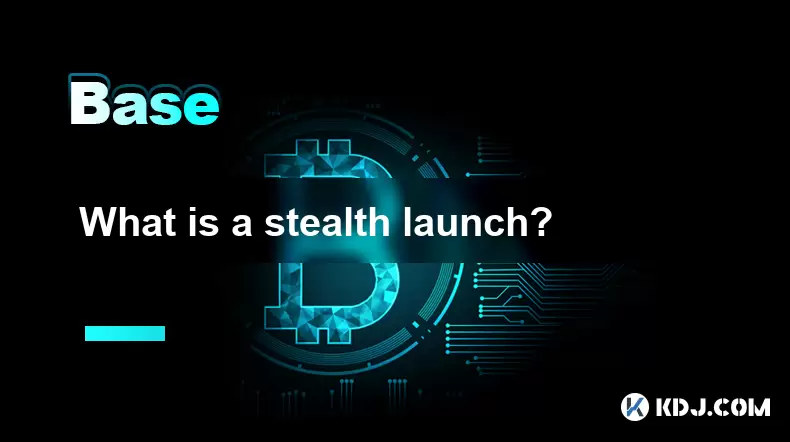
What is a stealth launch?
Jul 08,2025 at 06:42am
<h3>What Exactly Defines a Stealth Launch in Cryptocurrency?</h3><p>A stealth launch refers to the practice of launching a cryptocur...
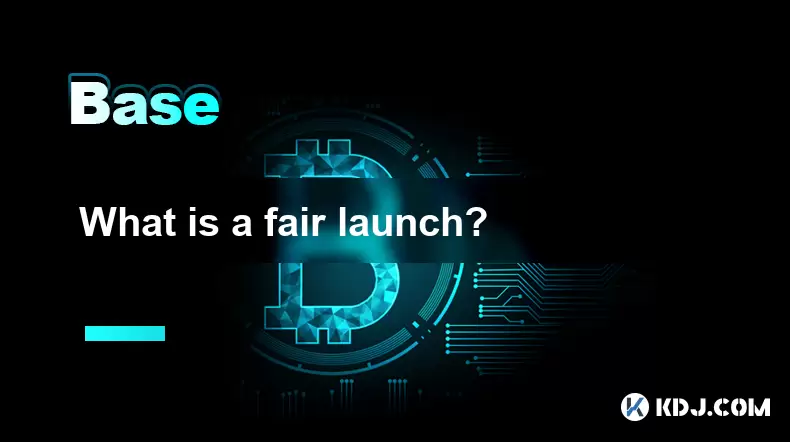
What is a fair launch?
Jul 05,2025 at 07:31pm
<h3>Understanding the Concept of a Fair Launch</h3><p>A fair launch refers to the release of a cryptocurrency or blockchain project ...

What is a user-generated content (UGC) NFT platform?
Jul 04,2025 at 01:49pm
<h3>Understanding the Concept of a UGC NFT Platform</h3><p>A user-generated content (UGC) NFT platform is a digital marketplace or e...

What is composability in DeFi?
Jul 06,2025 at 04:07pm
<h3>Understanding the Concept of Composability in DeFi</h3><p>Composability in DeFi refers to the ability of decentralized finance p...

What is a "crypto primitive"?
Jul 05,2025 at 10:14pm
<h3>Defining the Concept of a Crypto Primitive</h3><p>In the context of blockchain and cryptocurrency, a crypto primitive refers to ...

What is a crypto narrative?
Jul 07,2025 at 10:56pm
<h3>Defining the Concept of a Crypto Narrative</h3><p>A crypto narrative refers to the overarching story or theme that drives intere...

What is a stealth launch?
Jul 08,2025 at 06:42am
<h3>What Exactly Defines a Stealth Launch in Cryptocurrency?</h3><p>A stealth launch refers to the practice of launching a cryptocur...

What is a fair launch?
Jul 05,2025 at 07:31pm
<h3>Understanding the Concept of a Fair Launch</h3><p>A fair launch refers to the release of a cryptocurrency or blockchain project ...
See all articles
























